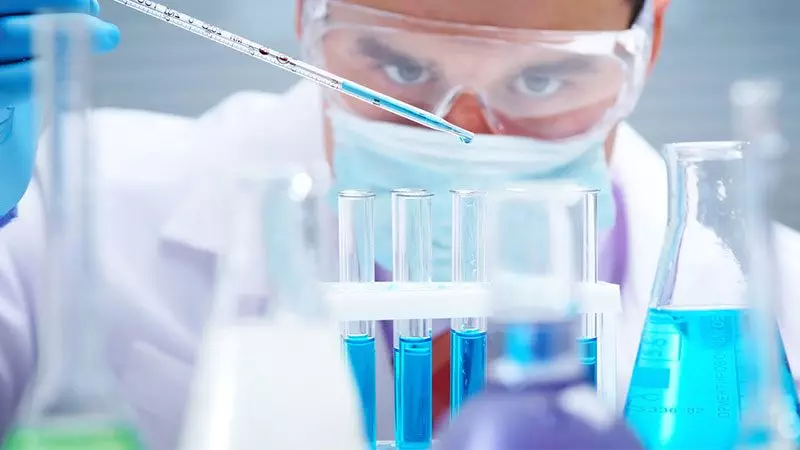PPE programs are an important component in laboratory safety, but not all are created equal.
Laboratory accidents can have tragic results, particularly if proper safety precautions are not taken. For instance, in 2008, a research assistant was working in a UCLA laboratory when an accidental chemical spill ignited a flash fire. This individual was not wearing the necessary personal protective equipment (PPE) and acquired severe second- and third-degree burns across 43% of their body. As a result of these injuries, the individual passed away 18 days later.
This story is not an isolated incident, nor is any laboratory immune to the risk of an accident occurring. Some of the most common laboratory accidents include fire and explosions, thermal and chemical burns, absorption of chemicals through the skin, inhalation of toxic fumes and cuts. Other accidents range from slips and falls to illnesses caused by contamination.
Fortunately, following careful work practices and establishing a strong safety culture can go a long way toward preventing accidents and minimizing injuries. The specific measures that a given laboratory should take to promote safety will vary depending on the types of activities performed and the hazards associated with them. For many laboratories, however, one of the most important components in optimizing safety is developing a proper PPE program.
Establishing a PPE program
There are several considerations that should be taken into account when establishing an effective PPE program. These include the specific types of protection needed to address potential hazards, compliance with standards, the comfort and fit of each item, the program’s long-term effectiveness, the simplicity and convenience of ordering products and wearer training procedures.
When it comes to determining the types of protection PPE should provide, it is important to first perform a thorough assessment to determine which safety hazards apply to the laboratory environment in question. This assessment will provide insight into the specific items that need to be included in the laboratory’s PPE program, such as safety goggles; flame-resistant, chemical-splash protective or barrier lab coats; gloves; masks; and beyond.
Once the necessary types of PPE have been identified, the next step in developing an effective PPE program is to review all applicable safety standards and regulations. For example, OSHA 1910.1450 outlines safety requirements—including the use of PPE—for laboratory environments where there is the potential for exposure to hazardous chemicals. Additionally, NFPA 45 provides PPE guidelines for laboratories that use chemicals and also face fire hazards. Complying with these regulations, as well as the numerous other safety standards and recommendations that apply to laboratories, helps to ensure that PPE will offer the right level of protection, work effectively and be available when it’s needed. In addition to minimizing laboratory injuries, diligent compliance with safety standards is also important for avoiding potential fines.
Beyond fully addressing safety standards, PPE should also be comfortable and fit properly. This is especially important because PPE that fits poorly can contribute to additional safety hazards. For instance, a lab coat that is too large can easily get caught on or dragged through something, increasing the likelihood of spills, accidental clothing ignition and falling. To ensure the proper fit, PPE that is available in multiple sizes or styles should be assigned and fitted on an individual basis. In addition to a proper fit, it is also important for PPE to be comfortable. If PPE is uncomfortable, it can be tempting to wear it incorrectly or forgo it entirely. However, even pushing up the sleeves of a lab coat or briefly removing a mask can have significant safety consequences—so, it is vital for PPE to be comfortable enough that it is worn properly.
In addition to establishing a PPE program based on protection, compliance, comfort and fit, it is necessary to consider implementation and long-term effectiveness. This means investing in high-quality PPE that is built with durability in mind and guaranteed to retain its protective qualities over time. All PPE should also be inspected for damage regularly and repaired or replaced as needed.
Technology can also play a significant role in effectively implementing and maintaining a PPE program. Many laboratories are now working with uniform suppliers to develop customized online stores that streamline the ordering process. These stores are populated with pre-selected products that meet the organization’s unique preferences and safety requirements. This selection of products can even include customized options like a university or laboratory logo. With a web-based store or similar technology in place, the products available in a given PPE program can be updated on an ongoing basis. Approved individuals can then quickly and easily order the correct items if industry standards change, someone new joins the laboratory or the existing PPE needs to be replaced.
After high-quality PPE that offers the appropriate protection, meets safety standards and provides a comfortable fit has been selected, training procedures should be established to ensure that each individual using the laboratory understands the importance of PPE and how to use it correctly. Depending on the particular laboratory environment, PPE training may include hands-on practice, video tutorials, instructional pamphlets and more. In addition to initial training, it can be beneficial to reinforce the importance and proper use of PPE through regular safety-related meetings, additional training sessions and/or signage throughout the laboratory.
PPE programs are an important component in laboratory safety, but not all are created equal. For optimum effectiveness, a PPE program should be based on a thorough hazard assessment, comply with all applicable industry standards, prioritize comfort and fit and keep long-term effectiveness in mind. Once the program has been established, everyone who uses the laboratory should receive thorough PPE training. With a strong PPE program in place, it is possible to keep laboratory accidents from turning into tragedies.

